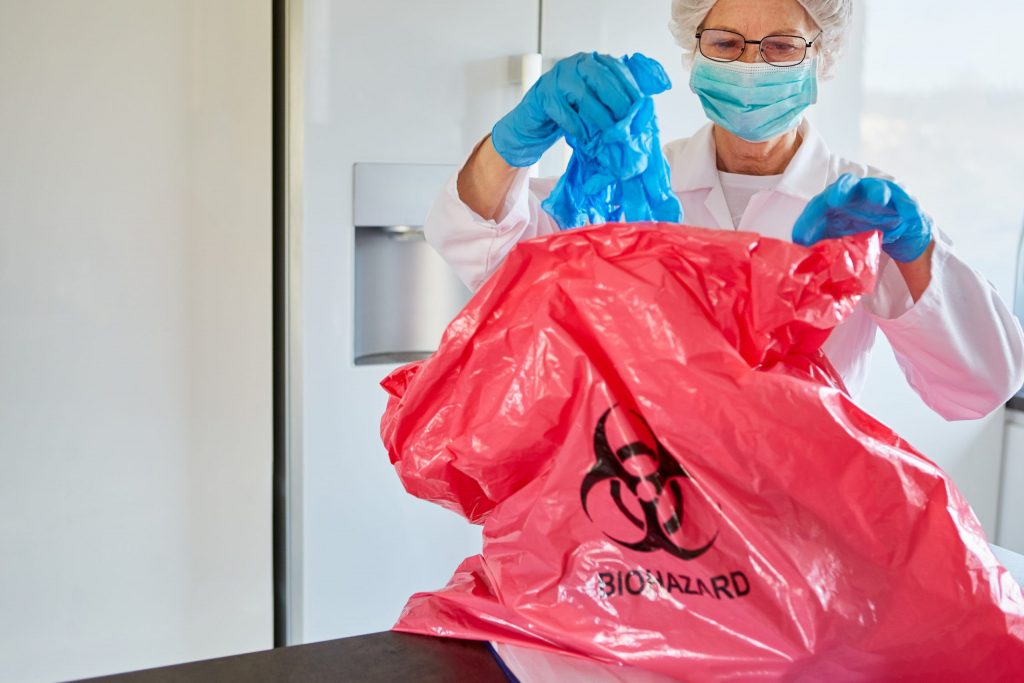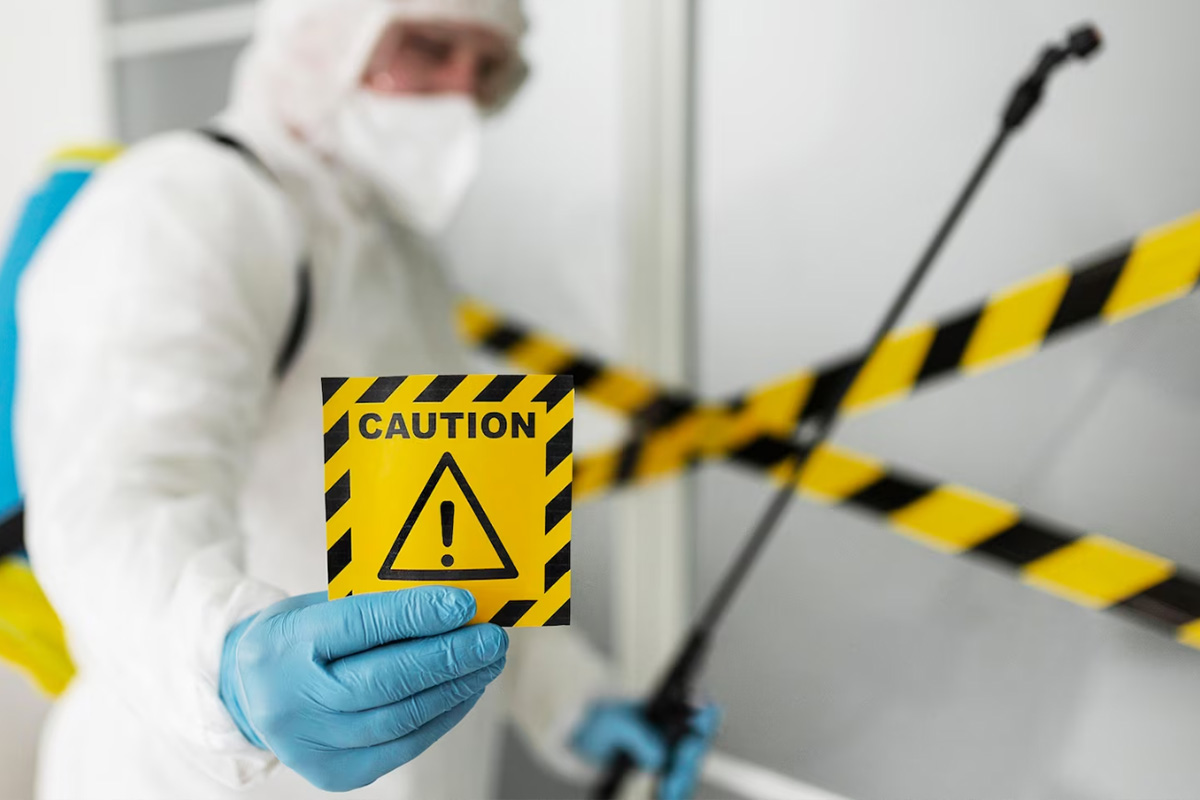Professional Blood Cleanup: Making Sure Safe and Thorough Decontamination
Professional Biohazard Cleansing and Purification for Blood, Bodily Fluids, and Hazardous Materials
In the realm of biohazard cleansing and purification for blood, physical fluids, and harmful materials, accuracy and expertise are critical. The prospective health dangers related to exposure to biohazards underscore the critical demand for meticulous handling and thorough cleaning. Specialized training outfits experts with the understanding and abilities essential to resolve these hazardous scenarios properly. Nevertheless, it is not just about tidying up; the relevance of using proper purification strategies can not be overemphasized. As we browse the elaborate landscape of biohazard clean-up, understanding the nuances of regulations, compliance, and the customized devices at play becomes necessary in making sure a thorough and safe decontamination process.
Wellness Threats of Biohazard Exposure
Exposure to biohazards poses substantial wellness risks that can lead to severe consequences for communities and individuals alike. Biohazards include a vast variety of biological materials, including blood, bodily liquids, mold and mildew, germs, viruses, and other possibly contagious products. When people come into contact with these biohazards, whether with accidents, inappropriate handling, or environmental exposure, they encounter the threat of contracting significant illnesses or conditions.
Among the main health and wellness dangers connected with biohazard exposure is the transmission of transmittable illness. Bloodborne microorganisms such as HIV, liver disease B and C, and numerous microorganisms can be present in biohazardous materials, presenting a direct risk to human health and wellness. Inhaling air-borne biohazards like mold and mildew spores or coming right into contact with infected surface areas can additionally bring about respiratory system concerns, allergies, and other damaging health results.
Additionally, biohazard direct exposure can have long-term health and wellness effects, with some diseases showing up years after the initial call (Blood Cleanup). As a result, it is crucial to focus on appropriate biohazard cleaning and purification to alleviate these health and wellness dangers and ensure the safety and security of people and communities

Specialized Training for Biohazard Cleaning
When it concerns taking care of biohazard clean-up effectively and securely, specialized training plays a fundamental function in ensuring appropriate decontamination treatments are followed. Biohazard cleaning needs details expertise and skills to efficiently alleviate dangers connected with bloodborne microorganisms, physical fluids, and harmful products. Specialists educated in biohazard clean-up undergo extensive guideline on exactly how to securely deal with, eliminate, and get rid of biohazardous materials to stop contamination and exposure.
Specialized training for biohazard cleaning covers a range of vital topics, consisting of appropriate individual safety tools (PPE) usage, bloodborne pathogen awareness, purification techniques, and dangerous waste disposal protocols. Individuals educated in biohazard cleanup are equipped with the essential know-how to examine contamination degrees, determine possible risks, and execute suitable cleanup procedures in conformity with governing standards.
Continuous training and education are critical in the area of biohazard cleaning to remain updated on the most recent purification modern technologies, safety methods, and regulations. By buying specialized training, biohazard cleanup professionals can efficiently react to emergency cleanup circumstances and secure both public wellness and the atmosphere.
Significance of Appropriate Purification Techniques
Making use of correct purification techniques is important in biohazard clean-up to effectively remove harmful products and reduce health threats. Reliable purification not just guarantees the removal of visible traces of blood, physical fluids, and various other biohazards yet also targets invisible microorganisms that may posture major health threats otherwise appropriately eradicated. By complying with rigorous decontamination procedures, trained professionals can substantially lower the risk of exposure to hazardous microorganisms, infections, and germs that could cause infections or conditions.
Appropriate purification strategies include making use of specialized tools and anti-bacterials that are especially created to counteract biohazards successfully. Extensive cleansing and sanitation of infected areas are important to protect against the spread of pathogens and make sure a risk-free setting for passengers. Furthermore, the correct disposal of biohazardous waste complying with decontamination treatments is vital in preventing contamination of other surface areas or people.

Tools and Tools for Safe Cleanup
When dealing with Web Site blood, bodily liquids, or harmful products, biohazard cleaning professionals count on specialized equipment to decrease direct exposure threats and completely decontaminate the affected location. Additionally, biohazard cleansing sets containing anti-bacterials, absorbent materials, and biohazard bags are utilized to safely get rid of and contain of polluted products.
Advanced cleaning tools like hospital-grade disinfectants, HEPA-filtered vacuums, and fogging devices are employed to sterilize surfaces and eliminate biohazards successfully. Specialized tools such as sharps containers and biohazard garbage disposal containers are utilized to securely handle sharp items and biohazardous waste products. By utilizing the right tools and tools, biohazard cleansing specialists can ensure a detailed clean-up procedure that focuses on safety and security and lessens wellness dangers for both workers and occupants of the affected area.
Laws and Compliance in Biohazard Cleansing
Appropriate adherence to guidelines and compliance criteria is extremely important in biohazard cleansing to guarantee the safety of both personnel and the environment. Federal government firms such as OSHA (Occupational Security and Health Administration) and the EPA (Environmental Security Firm) have developed certain guidelines for biohazard cleanup procedures to lessen health and wellness threats and environmental contamination. These regulations cover a series of facets consisting of the handling, transport, and disposal of biohazardous materials, as well as the necessary training and protective tools required for personnel entailed in the cleanup process.
Biohazard cleansing companies need to stay updated with these laws to guarantee that their operations fulfill the needed security requirements. Failing to comply with these guidelines can lead to serious consequences, including penalties, lawsuit, and jeopardizing the health of people and the environment. By following strict laws and conformity measures, biohazard cleansing business can successfully minimize risks and make sure a risk-free and extensive clean-up process for all celebrations included.
Conclusion
In conclusion, biohazard cleaning and purification call for specific training, proper techniques, and adherence to laws. Direct exposure to blood, physical liquids, and unsafe products poses significant health and wellness risks, making it vital to use the best equipment and devices for risk-free cleanup. By adhering to strict procedures and standards, specialists can successfully reduce the dangers related to biohazard exposure and make certain the safety of both themselves and others.
As visit the site we browse the detailed landscape of biohazard cleaning, comprehending the nuances of guidelines, conformity, and look at this web-site the specific devices at play ends up being critical in guaranteeing a detailed and safe decontamination process. (Blood Cleanup)
When it comes to handling biohazard cleaning efficiently and securely, specialized training plays a basic duty in guaranteeing appropriate decontamination treatments are complied with.Utilizing correct decontamination techniques is essential in biohazard cleanup to effectively eliminate dangerous products and minimize wellness dangers. Additionally, biohazard cleaning kits containing disinfectants, absorbent materials, and biohazard bags are made use of to safely get rid of and contain of polluted items.
Federal government agencies such as OSHA (Occupational Security and Health And Wellness Management) and the EPA (Environmental Defense Company) have actually established particular standards for biohazard cleaning treatments to minimize wellness dangers and environmental contamination.